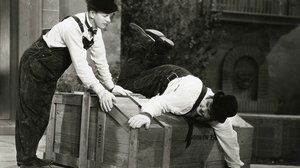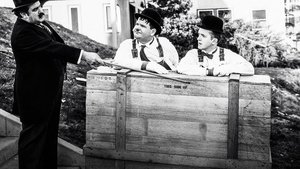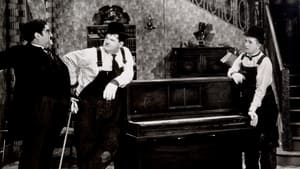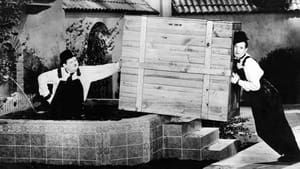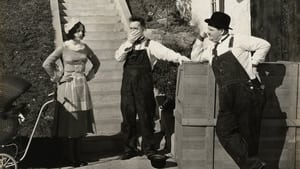Video Sources 0 Views
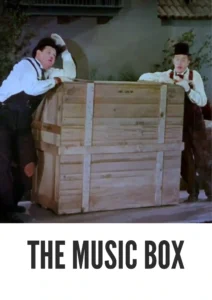
Download The Music Box (1932) Colorized HD | Laurel and Hardy | Comedy Short Classic
Synopsis
Laurel and Hardy’s Hilarious Delivery: The Music Box (1932) in Stunning Color

Get ready for side-splitting laughter with The Music Box, a timeless comedy short classic from 1932, now beautifully colorized for a viewing experience like never before. This film, featuring the iconic duo of Laurel and Hardy, captures their signature brand of slapstick humor and physical comedy as they attempt to deliver a piano. Perfect for classic comedy enthusiasts and those seeking a quick dose of laughter, this HD download brings a beloved piece of film history to your screen.
The Music Box Storyline: Piano Delivery Gone Wrong
The Music Box follows Stan Laurel and Oliver Hardy as they struggle to deliver a player piano to a house located at the top of a seemingly endless flight of stairs. Despite their best intentions, everything that can go wrong does go wrong, leading to a series of increasingly chaotic and hilarious mishaps.From struggling with the weight of the piano to encountering irate residents and mischievous obstacles, Laurel and Hardy’s every attempt to complete the delivery results in disaster. The film’s humor is derived from their physical clumsiness, their escalating frustration, and their inability to learn from their mistakes. The chaos culminates in the complete destruction of the piano, leaving Laurel and Hardy to face the wrath of the customer. Ultimately, The Music Box is a masterclass in slapstick comedy and a testament to the enduring appeal of Laurel and Hardy’s unique brand of humor.
Movie Cast
The film features the legendary comedic duo:
- Stan Laurel as Stan Laurel
- Oliver Hardy as Oliver Hardy
- Billy Gilbert as Professor Theodore von Schwartzenhoffen
Movie Genre
The Music Box falls into the genre of comedy short, specifically slapstick. Laurel and Hardy’s mastery of physical comedy makes it a timeless classic of the genre.
Historical Context: The Golden Age of Comedy Shorts
Released in 1932, The Music Box exemplifies the popularity of comedy shorts during the Golden Age of Hollywood. These short films provided audiences with a quick and accessible dose of laughter, often featuring slapstick humor and physical comedy. The Music Box was a critical and commercial success, winning the Academy Award for Best Short Subject (Comedy) in 1932, solidifying Laurel and Hardy’s status as comedic icons. The film’s enduring appeal lies in its timeless humor and its ability to transcend cultural and generational boundaries.
Colorization Details
This colorized version of The Music Box has been meticulously restored using modern digital techniques, enhancing the visual appeal while preserving the film’s original comedic timing and slapstick energy. The colorization process involved carefully analyzing the grayscale tones of the original black and white footage and assigning appropriate colors to each scene. While the specific software used remains proprietary, the techniques employed included advanced algorithms for color palette selection and image enhancement. This painstaking process brings new life to the characters and settings, making the story even more engaging for modern audiences. While some may debate the merits of colorizing classic films, it introduces these films to a broader audience, ensuring their legacy for future generations.
Technical Details
- Director: James Parrott
- Producer: Hal Roach
- Screenplay: H.M. Walker
- Cinematography: Reginald H. June
- Edited by: Richard C. Currier
- Production Company: Hal Roach Studios
- Distributed by: Metro-Goldwyn-Mayer (MGM)
- Runtime: 29 minutes
Technical Specifications
- Download Format: MP4
- Resolution: HD (1080p)
- Compatibility: Compatible with most devices, including smartphones, tablets, computers, and smart TVs.
Reviews and Critical Reception
The Music Box (1932) is universally recognized as one of Laurel and Hardy’s finest works and a masterpiece of slapstick comedy. Its timeless humor and expertly crafted physical gags continue to delight audiences of all ages. The film’s simple premise and brilliantly executed comedic sequences have cemented its place in film history. As a short film that captures the essence of Laurel and Hardy’s comedic genius, it remains an enduring source of laughter and entertainment.
FAQs
- Q: What is The Music Box about?
- A: The Music Box is a comedy short about Laurel and Hardy’s disastrous attempts to deliver a piano up a long flight of stairs.
- Q: Is The Music Box (1932) an Academy Award winner?
- A: Yes, The Music Box won the Academy Award for Best Short Subject (Comedy) in 1932.
- Q: Is this version of The Music Box colorized?
- A: Yes, this version has been professionally colorized to enhance the viewing experience.
- Q: What makes Laurel and Hardy’s comedy so timeless?
- A: Laurel and Hardy’s physical comedy, their relatable characters, and their ability to create humor from everyday situations make their films universally appealing.
- Q: What is the download format?
- A: The download format is MP4, which is compatible with most devices.
- Q: What resolution is the download?
- A: The resolution is HD (1080p), providing a high-quality viewing experience.
Download Now in HD!
Watch The Music Box Today!
